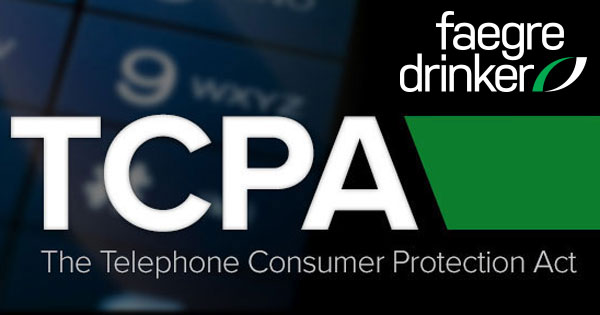The Fifth Circuit recently held that a TCPA plaintiff who received a single text message suffered an Article III injury sufficient to support standing for his claim. In Cranor v. 5 Star Nutrition, L.L.C., No. 19-51173, 2021 WL 2133433 (5th Cir. May 26, 2021), the plaintiff alleged that 5 Star Nutrition violated the Telephone Consumer Protection Act (TCPA) when it sent him several unsolicited advertising text messages. The parties entered into a settlement agreement to avoid litigation. After the settlement, 5 Star Nutrition sent one final promotional text message and the plaintiff filed suit, claiming that the single text message harmed him by invading his privacy, interfering with his right to his cellular phone and telephone line, and intruding upon his seclusion.
The district court dismissed the plaintiff’s claim for lack of standing. It reasoned that, while “text messages are sufficient forms of injury in fact in actions arising out of the [TCPA],” the “single text message here does not constitute [an] injury in fact” because “a single unwelcome text message will not always involve an intrusion into the privacy of the home in the same way that a voice call to a residential line necessarily does.”
In overturning the district court, the Fifth Circuit reasoned that Congress had enacted the TCPA to do away with the “proliferation of intrusive, nuisance” calls from telemarketers. The court considered the plaintiff’s injury to be “exactly the one Congress sought to remediate” in enacting the TCPA. First, the court explained, the TCPA expressly covers cellular phones. Second, the TCPA addresses “nuisance and invasion of privacy” in a variety of non-residential contexts. And finally, Congress did not limit the FCC’s ability to implement the TCPA to cover nuisances and privacy only in the home. Given these considerations, the Fifth Circuit held that the “TCPA cannot be read to regulate unsolicited telemarketing only when it affects the home.”
The Fifth Circuit also turned to the history of the “case-or-controversy” requirement of Article III as discussed in Spokeo, Inc. v. Robbins, 136 S. Ct. 1540 (2016). The court determined that the plaintiff’s injury had a close relationship to the common law harm of “public nuisance.” Historically, public nuisance is an “unreasonable interference with a right common to the general public,” which a sovereign typically addressed through “criminal prosecution and abatement by way of an injunctive decree or order.” Private citizens could also sue due to a public nuisance if they could show that they “had suffered damage particular to [themselves] and not shared in common by the rest of the public.” The Fifth Circuit analogized the plaintiff’s TCPA claim to “someone who wants to use . . . [a] piece of infrastructure like a road or bridge without confronting a malarial pond, obnoxious noises, or disgusting odors.”
The court also rejected the Eleventh Circuit’s view in Salcedo v. Hannah, 936 F.3d 1162 (11th Cir. 2019). As we previously covered, the Salcedo court held that the receipt of a single text message was not sufficient to confer Article III standing. In Salcedo, the court concluded that there was no common law analogue to the harm of receiving an unwanted robotexted advertisement. The Fifth Circuit reasoned that the Salcedo court misunderstood the historical inquiry discussed in Spokeo, which is to ask whether “an alleged intangible harm has a close relationship to a harm that has traditionally been regarded as providing a basis for a lawsuit in English or American courts.”
The Fifth Circuit’s decision in Cranor is a departure from the Eleventh Circuit’s unwillingness to find concrete injury-in-fact in cases involving a single text message. While the Eleventh Circuit is not alone, the Fifth Circuit joins the ranks of the Ninth Circuit, where TCPA plaintiffs will find the standard for Article III standing easier to meet. We will continue to monitor how additional courts handle TCPA cases involving single text messages.

